Projectors have become a staple in both business and personal life. They can offer several benefits, from increased productivity in the workplace to more enjoyable home movie nights.
When it comes time to choose a projector, there are two main types to choose from: DLP and laser projectors. Each has its advantages and disadvantages, so how do you know which is right for you? This article will explore the differences between DLP and laser projectors and help you decide which one is best for your needs!
What is a DLP Projector?
A DLP (Digital Light Processing) projector is a type of digital device that projects images from a computer or other source onto a screen. It uses an optical semiconductor chip known as the Digital Micromirror Device (DMD), which contains millions of tiny mirrors that can be individually controlled to project different shades and intensities of light. This allows for sharper, more detailed images than traditional projection systems.
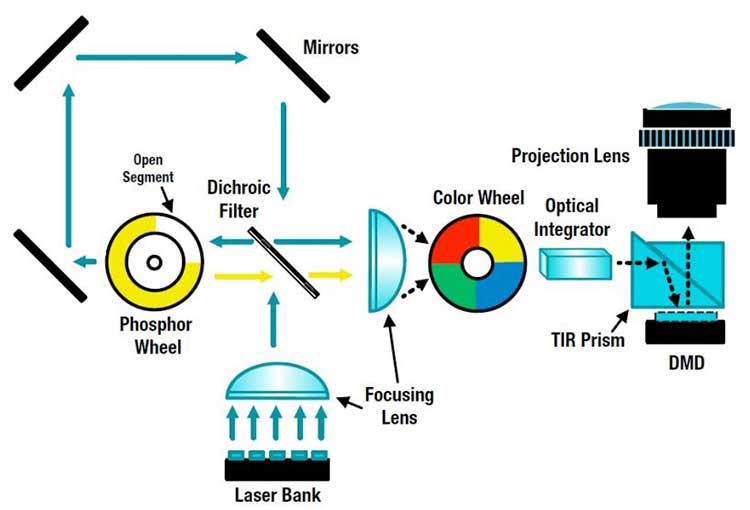
DLP projectors are great for business presentations, home theater systems, or any situation where you need to display high-quality visuals. They are relatively affordable and easy to set up, making them ideal for those who don’t want to invest in expensive equipment such as LCD or LED displays.
Additionally, they have low maintenance requirements, with most models requiring just an occasional bulb replacement every few years. There are a variety of sizes, resolutions, and brightness levels available in DLP projectors, so you can find the right model to fit your needs.
Additionally, some models have advanced features such as lens shift and keystone correction for easier setup and alignment. With all these benefits, it’s no wonder why DLP technology is becoming increasingly popular [1].
What is a Laser Projector?
A laser projector is a device that uses lasers to project an image onto a screen, wall, or another surface. Laser projectors typically utilize at least two lasers of different colors – usually red and blue – to generate the desired color output. The projected image is usually made up of thousands of tiny points of colored light which combine to create the final image.
This type of projector provides greater brightness and clarity than traditional projection systems, making them ideal for home theaters, classrooms, corporate presentations, and other applications where superior picture quality is desired.
Additionally, laser projectors can display images with increased accuracy due to their ability to produce more precise images than traditional projection systems. As a result, they are often used in professional settings such as museums, art galleries, and other venues where high-quality visuals are desired.
When purchasing a laser projector, it is important to consider factors such as the brightness of the projected image, the size of the projected image, and the resolution and color accuracy of the projector.
Additionally, some laser projectors have additional features such as built-in speakers or network connectivity which can be beneficial for certain applications.
By taking all of these factors into consideration, you can ensure that you choose a projector that best meets your needs [2].
Laser Projectors versus DLP Projectors
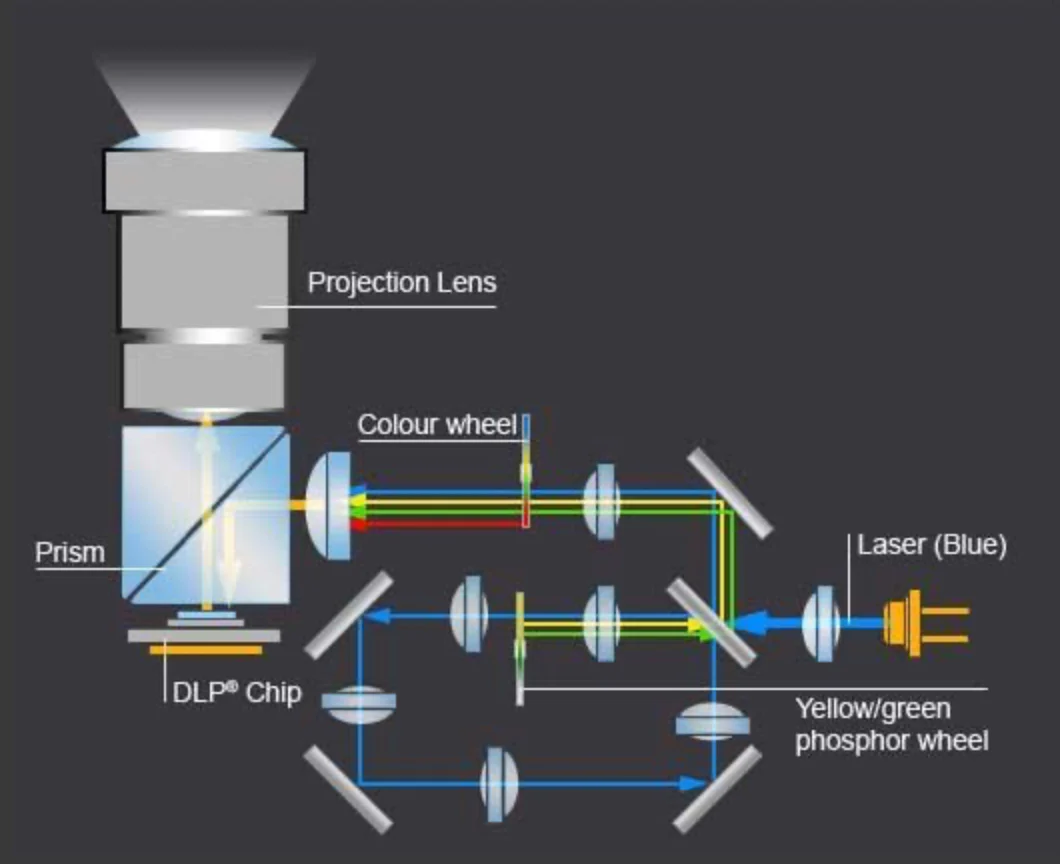
Which Has the Better Picture Quality?
When it comes to image quality, both laser and DLP projectors have their pros and cons. Laser projectors offer brighter colors and excellent contrast, making them ideal for presentations that require a lot of detail or clarity. However, they can be expensive as well as prone to ghosting in certain applications.
DLP projectors provide good brightness levels but not quite as impressive color accuracy or contrast compared to laser models. They also tend to suffer from the dreaded “rainbow effect” – a visible breakup that occurs when different colors are projected in rapid succession.
Which Lasts Longer and has Better Energy Efficiency?
When it comes to longevity, laser projectors last longer than DLP models. This is because the light source in a laser projector has a lifespan of around 20,000 hours, while a standard lamp-based projector may only last 5,000 to 8,000 hours. Additionally, laser projectors use less energy and can be used with eco-friendly features such as auto shutoff and sleep modes that reduce power consumption.
DLP projectors also have some advantages in this regard; they’re more efficient at converting electrical power into projected brightness compared to lasers which makes them better for large venues and bright rooms where you need lots of lumens (the unit of measure for brightness).
They usually consume less electricity overall than their laser counterparts as well. Finally, DLP projectors have a fast refresh rate which reduces motion blur and makes them more suitable for gaming or watching sports.
Which Is the Brighter and More Colorful Projector?
When it comes to brightness and color accuracy, laser projectors are the clear winner. They can emit up to 10,000 lumens of light compared to a maximum of around 7,500 for DLP models.
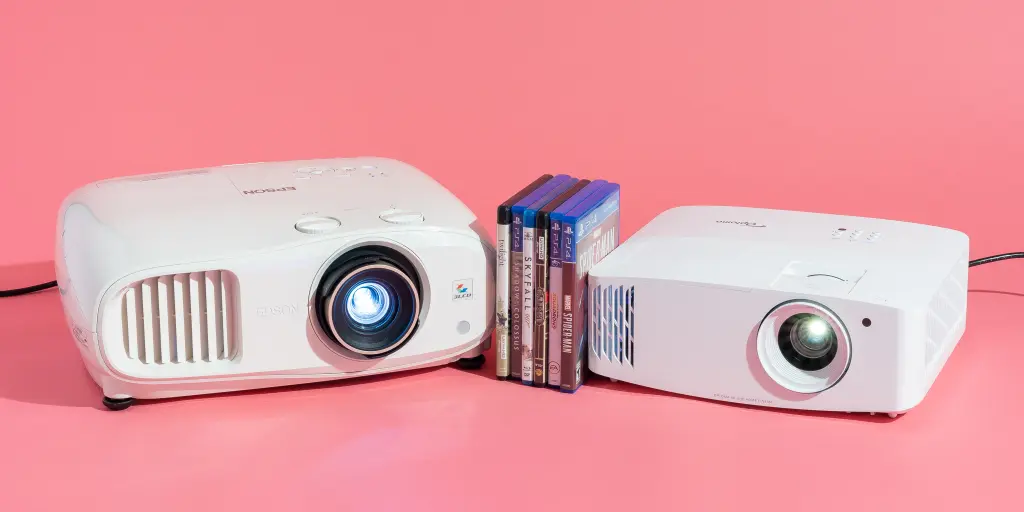
Additionally, they have better contrast ratios which make them great for presentations that require a lot of detail or clarity. Laser projectors also produce more accurate colors than DLP models with less visible noise in dark scenes.
On the other hand, DLP projectors offer better refresh rates and an overall brighter image when used in larger venues or bright rooms. This makes them ideal for gaming and watching sports where fast-paced action requires a high refresh rate.
Which Requires The Least Amount of Maintenance?
Both laser and DLP projectors require minimal maintenance. In both cases, you’ll need to regularly clean the filters and vents to prevent overheating. Additionally, it’s important to check for firmware updates as these can help improve performance and reduce any compatibility issues with other devices.
However, since laser projectors don’t use lamps they tend to be easier to maintain in the long run than their DLP counterparts. This is because they don’t need to be replaced as often; instead, all that’s required is a quick dusting or cleaning of the lenses now and then.
Finally, keep in mind that both types of projectors will eventually require a replacement after their estimated lifespan has been reached. As such, it’s important to factor in replacement costs when comparing models.
Which is Cheaper to Operate or Run?
In general, DLP projectors are cheaper to run than laser models. This is because they require less power to produce a bright and vivid image and consume less electricity overall. Additionally, since they don’t use lamps they usually don’t need to be replaced as often which can save you some money in the long run.
On the other hand, laser projectors may cost more upfront but offer a better value over time thanks to their longer lifespans and lower energy consumption rates.
DLP vs.
LCD vs. LED vs. Laser projector – which one is the best?
Projector technology is rapidly changing, making it increasingly difficult to decide which type of projector is best for a particular situation. DLP (Digital Light Processing), LCD (Liquid Crystal Display), LED (Light Emitting Diode), and Laser projectors all have different advantages, so the answer will depend on your needs.
DLP projectors use tiny mirrors that digitally process light to produce an image. They are capable of producing highly detailed images in high definition with rich color quality. The main disadvantage of this type of projector is that they tend to be slightly more expensive than other types.
LCD projectors use liquid crystal shutters that open and close to allow light through and produce an image on the screen. LCD projectors typically have a lower contrast ratio than other types of projectors, but they are generally the most affordable option.
LED projectors use LED bulbs to produce an image. They provide brighter images and a longer lifespan than other projector types, but they can be more expensive.
Laser projectors use lasers to create pictures with bright colors and vivid detail. These tend to be the most expensive type of projector, but they also offer some of the best performance in terms of image quality and brightness.
In conclusion, it is difficult to say which type of projector is definitively the “best” since each one has its advantages and disadvantages depending on your needs. Ultimately, you will need to weigh up all the factors to decide which projector is the best for you [4].
How to use a DLP projector?
Using a Digital Light Processing (DLP) projector is quite simple. You just need to connect the projector to your computer, phone, or DVD player and then use the remote control to adjust the settings and display options.
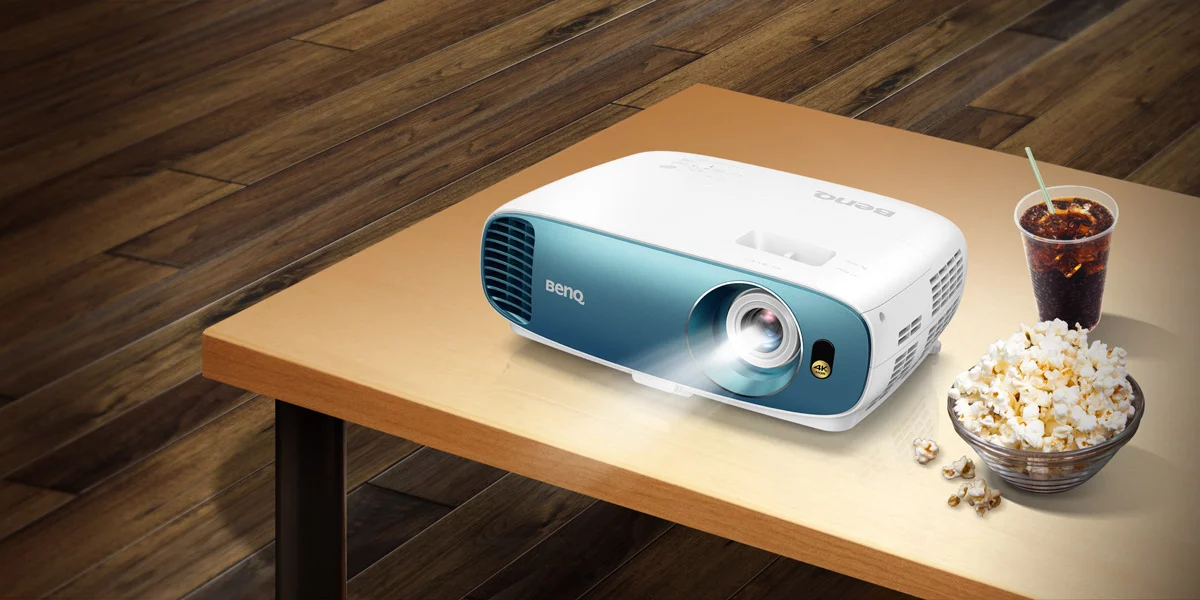
To begin, connect one end of the VGA/HDMI cable from the DLP projector to your laptop, DVD player, or another device you wish to project from. Plug in the power adapter and turn on the projector. On most models, there will be an ‘On’ button on either side of the unit that needs to be pressed.
Once powered up, you can begin adjusting its settings such as brightness and contrast ratio via the remote controller (or built-in controls if yours does not come with one). Select the input source you wish to use (such as “VGA” or “HDMI”) and then adjust the image size, position, and other settings like Aspect Ratio.
Finally, press the ‘Project’ button on the remote control and your image should be projected onto the wall or screen. You can also make adjustments to focus if necessary for a sharper image. Enjoy watching movies, presentations, or whatever else you decide to project!
How to maintain a laser projector?
Laser projectors require regular maintenance to ensure they maintain their performance and remain in good condition. Here are some tips on how to maintain a laser projector:
- Clean the projector’s lens regularly: Dirt and dust can build up on the projector’s lens, reducing its brightness and clarity. To keep your projector running at peak performance, clean it with a microfiber cloth or compressed air every few weeks or months.
- Avoid excessive heat exposure: Heat can damage the internal components of the projector, leading to costly repairs. Ensure that your projector is placed away from direct sunlight and in well-ventilated areas like near an open window or fan. It is also important to note that if you need to move your projector, you should make sure it has had time to cool off first.
- Perform regular bulb checks: It is important to check the condition of your laser projector’s bulb regularly. If you notice any dimming or flickering of the image, then it is likely that the bulb needs changing. Most manufacturers will recommend changing the bulb after 3-4 years of use, but this can depend on how much the projector is used and what conditions it is exposed to.
- Keep the lens covered when not in use: Leaving the lens uncovered increases its exposure to dust and other damaging particles from the environment, which can reduce its performance over time. When not in use, keep your projector covered with a cloth or protective case.
- Regularly inspect the internal components: It is also important to regularly inspect the internal components of your projector for signs of wear and tear. This includes inspecting fans, air filters, cables, and any other parts that require regular maintenance or replacement.
Follow these simple tips to ensure that your laser projector stays in good shape and provides an excellent viewing experience for years to come!
FAQ
Is a laser projector better than DLP?
The answer to this question depends on your individual needs and preferences. Laser projectors have many advantages, such as brighter images, higher resolutions, and a longer lifespan compared to DLP projectors. However, they are also more expensive than DLP models and can be harder to find since not all manufacturers make them. Ultimately, it’s up to you to decide which projector is best for your specific needs.
Are laser projectors brighter than DLP?
Yes, laser projectors typically have higher brightness levels than DLP models. This is because the lasers used in laser projectors can create a much more concentrated light source than what can be achieved with a traditional lamp and mirror system found in most DLP projectors. As a result, images created using a laser projector will usually appear brighter on screen.
Do I need an external player for my laser projector?
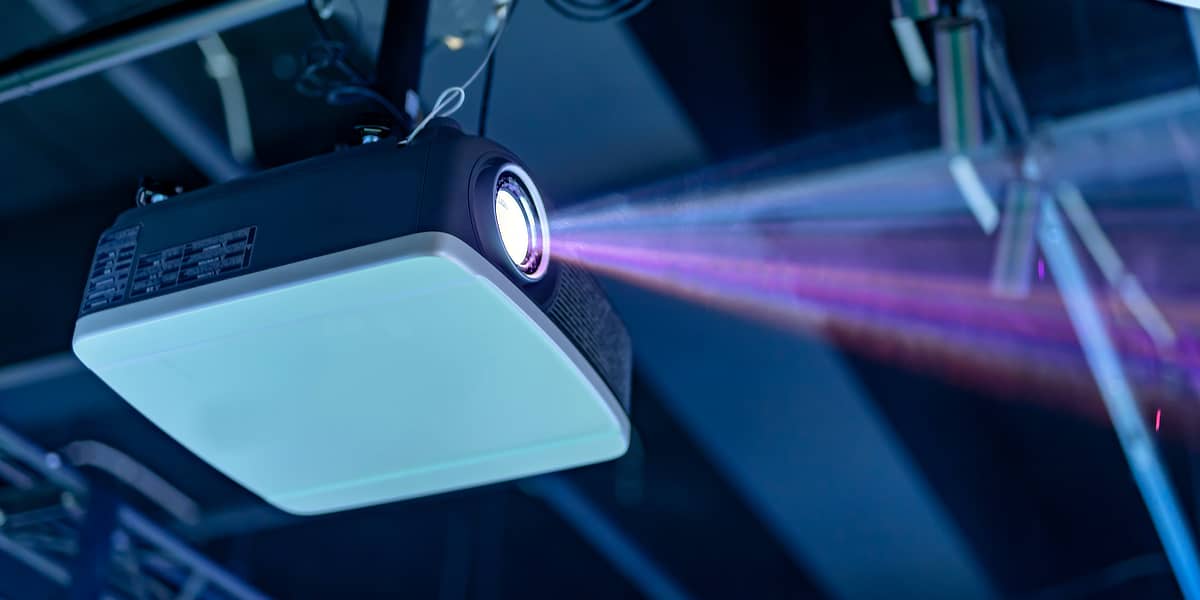
No, most modern laser projectors are self-contained and do not require an additional device to play media content. However, it’s important to check the specifications of your particular model before purchasing it to make sure that it has all the features you need for your setup.
Are there any special requirements for mounting a laser projector?
Yes, most modern laser projectors require special mounting systems due to their higher weight and size. It’s important that you check the specifications of your model before attempting to mount it to ensure that your particular setup meets all of the manufacturer’s requirements. Additionally, make sure that the mounting surface is strong enough to support the weight of the projector.
Are laser projectors better for gaming?
Laser projectors typically provide brighter and more vivid visuals than DLP models, making them ideal for gamers who demand high-quality graphics and colors. Additionally, they often have faster refresh rates than DLP models, which results in smoother gameplay with less input lag. However, since laser projectors tend to be more expensive than DLP models, gamers on a tighter budget may be better off with a DLP projector.
What are the benefits of laser projection?
The main benefit of laser projection is its superior brightness and image quality. Laser projectors can produce brighter images with more vivid colors and higher resolutions than what can be achieved with a traditional lamp-based system found in most DLP projectors.
Additionally, they often last longer than their counterparts since lasers don’t require regular replacement like lamps do. Finally, they tend to have faster refresh rates, which results in less input lag and smoother gaming experiences.
What are the disadvantages of a DLP projector?
The main disadvantage of a DLP projector is its limited brightness. Since it relies on a lamp-based system to produce the image, DLP projectors typically don’t produce as bright an image as what can be achieved with a laser projector.
Additionally, since the bulbs in DLP projectors need to be replaced every few thousand hours or so, they tend to have shorter lifespans than their laser counterparts. Finally, they often suffer from more input lag than laser projectors due to their slower refresh rates.
Do laser projectors use DLP?
No, laser projectors use lasers instead of the traditional lamp-based system found in most DLP projectors. This results in brighter images with higher resolutions and longer lifespans than what can be achieved with a DLP projector.
Why are laser projectors better?
Laser projectors offer several key advantages over traditional DLP models. They typically produce brighter images with more vivid colors and higher resolutions than what can be achieved with a lamp-based system found in most DLP projectors.
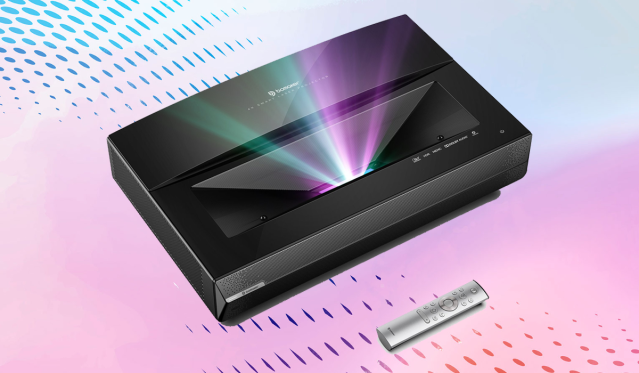
Additionally, they often last longer than their counterparts since lasers don’t require regular replacement like lamps do. Finally, they tend to have faster refresh rates, which results in less input lag and smoother gaming experiences. All of these factors make laser projectors an attractive option for those who demand high-quality visuals from their projector setup.
Is a DLP projector good for movies?
Yes, a DLP projector is still a great option for watching movies. While it may not produce as bright an image as what can be achieved with a laser projector, its lamp-based system still produces high-quality visuals that are perfect for watching films or TV shows. Additionally, since DLP projectors use lamps instead of lasers, they tend to be more affordable than their laser counterparts. All in all, if you’re on a tighter budget then a DLP projector might be the best choice for you.
How long does the DLP projector last?
The lifespan of a DLP projector depends on the type and quality of the bulb used. Generally speaking, most bulbs have a lifespan of around 2,000-4,000 hours before they need to be replaced. However, cheaper models may require more frequent replacements due to their lower-quality parts. To get the most out of your DLP projector, make sure you purchase one with high-quality bulbs and follow all of the manufacturer’s instructions for maintenance and replacement.
Which is better, DLP or LED?
That depends on your needs and budget. LED projectors tend to be brighter, have a longer lifespan, and require less maintenance than DLP models. However, they also tend to be more expensive. On the other hand, DLP projectors are cheaper and can still produce high-quality visuals for watching movies or playing video games. Ultimately, it all comes down to what you need from your projector setup and how much you’re willing to spend on it.
Which projector is best for home DLP or LCD or LED?
Again, this depends on your needs and budget. For home use, an LCD or LED projector would generally be a better choice than a DLP model due to their brighter images and longer lifespans. However, if you’re on a tight budget then a DLP projector may still be the best option for you. Either way, make sure to do your research before deciding which projector is right for you.
Is a DLP projector good for movies?
Yes, a DLP projector is still a great option for watching movies. While it may not produce as bright an image as what can be achieved with a laser projector, its lamp-based system still produces high-quality visuals that are perfect for watching films or TV shows. Additionally, since DLP projectors use lamps instead of lasers, they tend to be more affordable than their laser counterparts. All in all, if you’re on a tighter budget then a DLP projector might be the best choice for you.
Can a laser projector replace a television?
Yes, a laser projector can replace the television in certain situations. Since they typically produce brighter images with higher resolutions and longer lifespans than what can be achieved with most TVs, they are an attractive alternative. Additionally, some laser projectors can even double as a home entertainment system since they come with built-in speakers and other features. However, you should still evaluate your needs carefully before deciding which type of projector is right for you.
What advantages do laser projectors have over DLP?
Laser projectors tend to have several advantages over their DLP counterparts. For one, they typically produce brighter images with much more vivid colors and higher resolutions than what can be achieved with a lamp-based system found in most DLP projectors. Additionally, they often last longer than their counterparts since lasers don’t require regular replacement like lamps do. Finally, they tend to have faster refresh rates, which means they can play video or gaming content without any lag.
Useful Video: DLP & LCD & Laser PROJECTOR – How They Work + TEARDOWN
Conclusion Paragraph
DLP or Laser Projector? That’s a tough question. Both types of projectors offer great visual experiences, but it depends on the circumstances in which you’re using the projector and what features are important to you. DLP projectors offer better contrast and brighter images while being more affordable.
Laser projectors have higher resolutions and longer-lasting bulbs, but tend to be more expensive. Ultimately, it’s up to your own needs and preferences when deciding between a DLP or laser projector. Be sure to consider all factors before making your decision so that you can get the best results for your situation!
References
- https://www.viewsonic.com/library/entertainment/what-look-for-dlp-projector/
- https://www.maketecheasier.com/what-is-laser-projector/
- https://projectorninja.com/dlp-vs-laser-projector/
- https://economictimes.indiatimes.com/magazines/panache/confused-between-dlp-lcd-led-some-tips-to-buy-the-right-projector




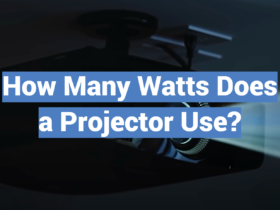
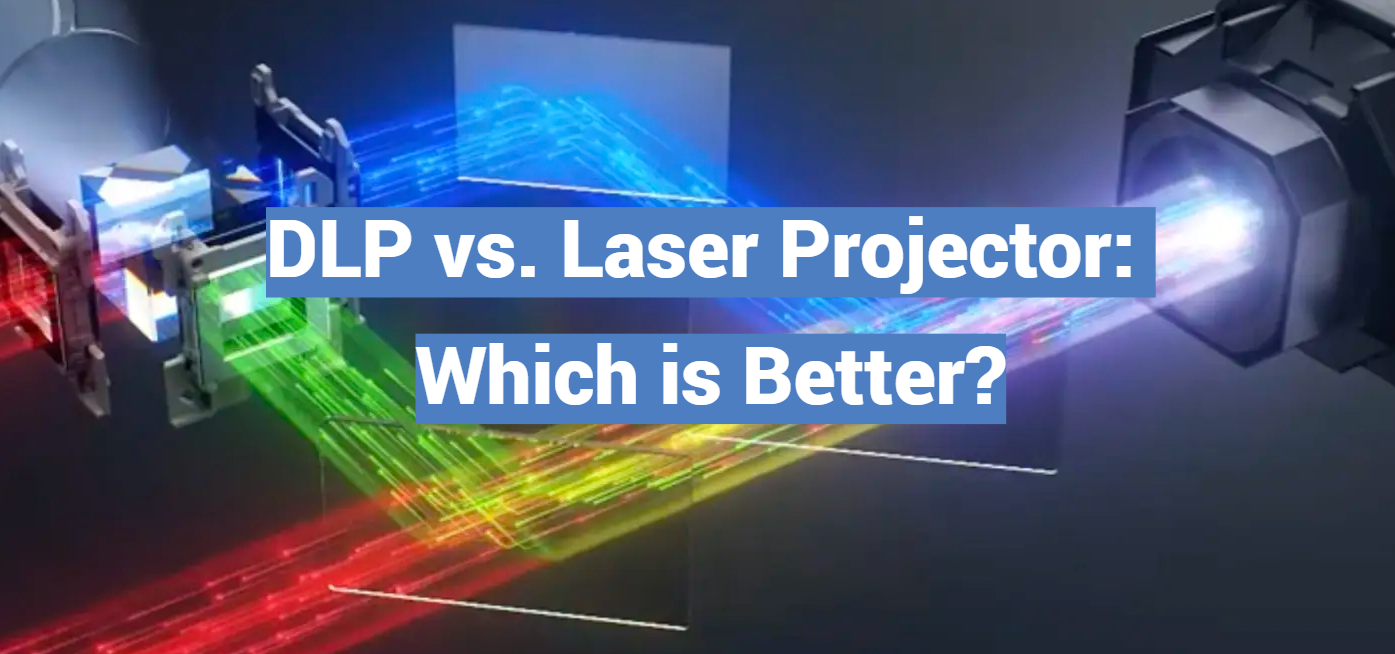

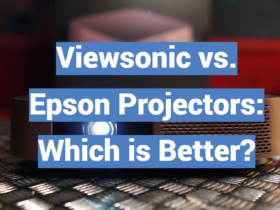
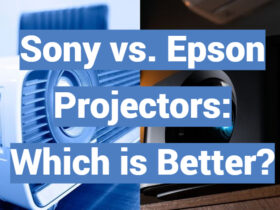
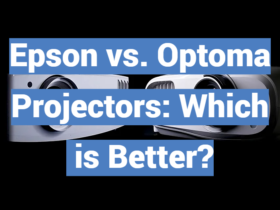
Leave a Review